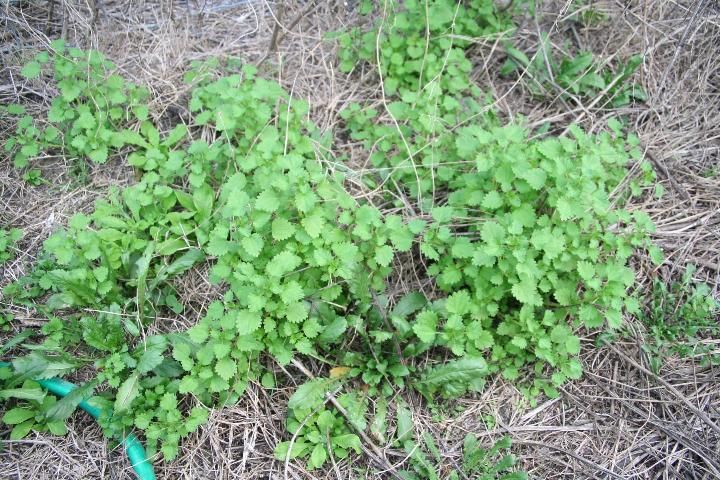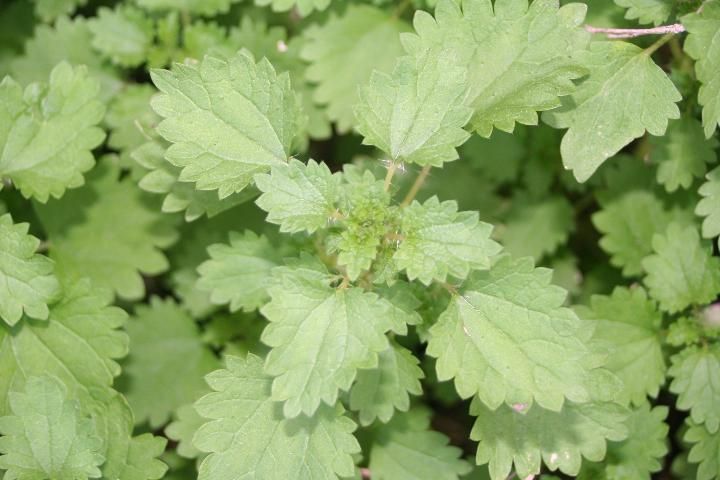Fireweed (Heartleaf Nettle) Control in Pastures
Introduction
Fireweed (Urtica chamaedryoides) (Figure 1) is native to Florida, but has only recently become problematic. This winter annual species is commonly observed in north and central Florida pastures, particularly in bareground areas (near feeding pens and under fences), and along tree lines where forage grasses are less dense.

Credit: B. Sellers, UF/IFAS
Fireweed is particularly troublesome because it possesses stinging hairs that easily embed in skin. Upon exposure to the toxin, severe irritation can occur for several hours. Cattle generally avoid it, but horses are more likely to browse fireweed and develop stress symptoms. These symptoms commonly manifest themselves as weight loss, or difficulty in swallowing and breathing for many days after consumption. In extreme cases, young horses have died after rolling in fireweed and becoming overexposed to the toxins in the leaf hairs.
Biology
Fireweed leaves resemble those of a strawberry plant (Figure 2), but the plant as a whole has little resemblance to strawberry. The plant has square stems and small pale green flower clusters. Small stinging hairs are found on the stems, petioles, and leaves. These hairs contain irritants that have been shown to cause respiratory stress and local allergic reactions when ingested or inhaled.

Credit: B. Sellers, UF/IFAS
Control
Little work has been reported for control of this seasonal species. Therefore, experiments were conducted to determine which pasture herbicides are most effective on fireweed.
It was observed that 2,4-D and Telar were ineffective on fireweed (Table 1). Glyphosate, which can be applied when pasture grasses are dormant, provided as much as 80% control. However, in other experiments, we have found glyphosate to be inconsistent on fireweed, sometimes providing as little as 30% control. Due to its potential of severe injury to pasture grasses that are not fully dormant as well as its inconsistency on this plant, glyphosate is not recommended for control of fireweed.
Weedmaster at 1.5 qt/A did not provide acceptable levels of control, but GrazonNext HL, Remedy Ultra, and Pasturegard HL were found to be highly effective. Within 2 weeks of application, over 90% of the fireweed plants were dead, and the remaining individuals were yellow and dying. By 6 weeks after treatment, no fireweed could be found.
It is our recommendation that GrazonNext HL, Remedy Ultra (or comparable triclopyr ester product), or Pasturegard HL be used for effective control of fireweed. These herbicides can be applied at any time of the year to warm-season forage grasses. There are no grazing restrictions for beef cattle with these herbicides, but lactating dairy animals must be removed for 0 and 14 days with GrazonNext HL and Remedy Ultra, respectively, and one season for Pasturegard HL.
Mowing provides no control of this species. In fact, mowing has been found to result in smaller plants, but with many more stinging hairs. Additionally, the seed is surrounded by a sticky substance that can be transported by mower blades to infestation-free areas.
If not controlled, fireweed generally disappears in May with the onset of summer temperatures.


